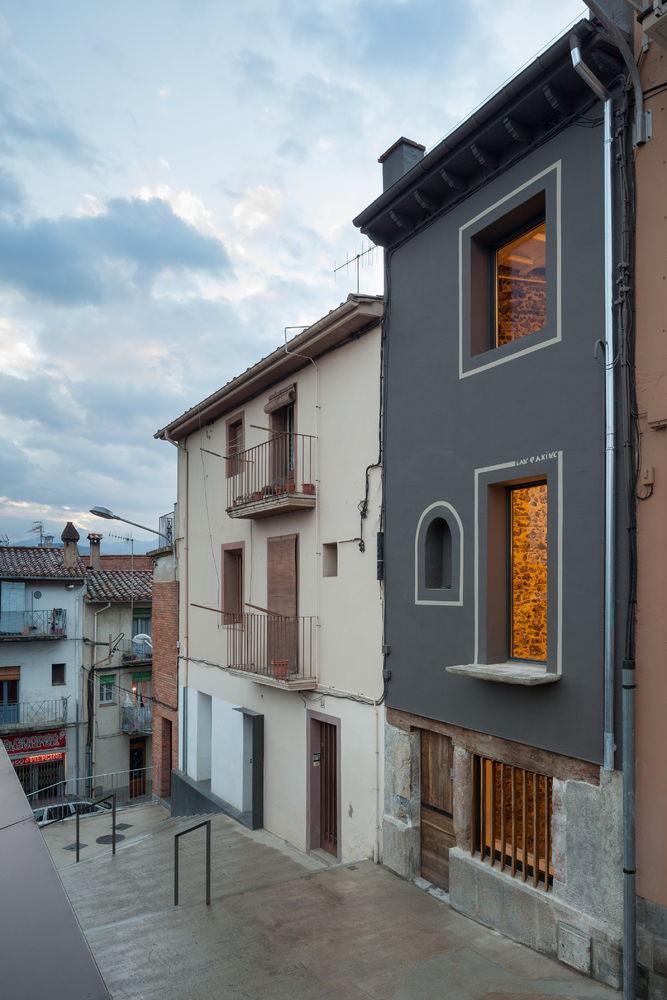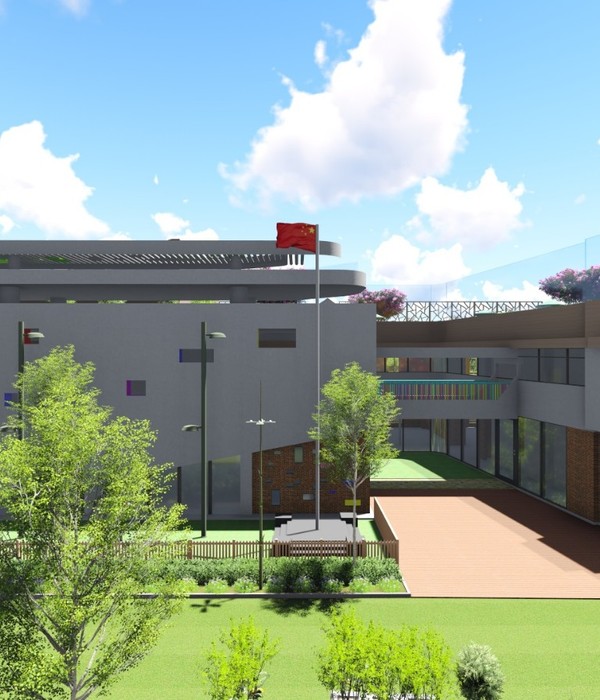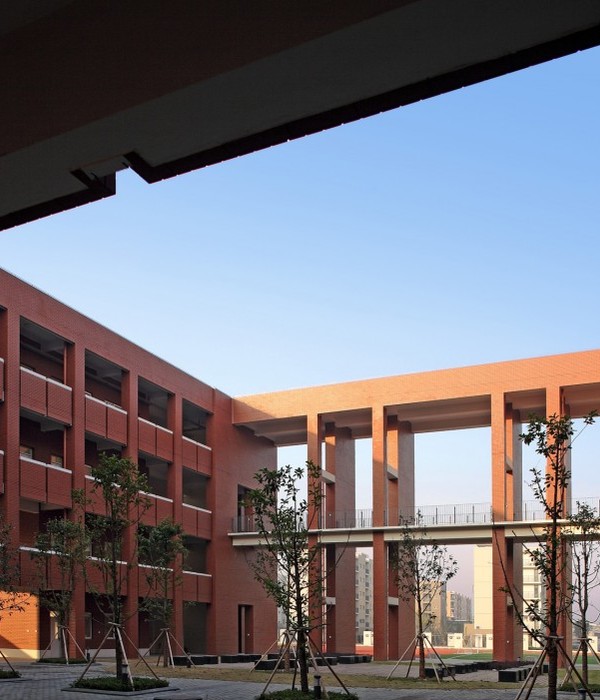垂直空间的艺术 | 古老建筑的现代改造












About three hundred years ago, someone built this humble house in a narrow plot located in a steep alley. Someone who took humility and local building tradition as arguments to erect a fine building, made with materials from own site, clearly and easyly organized and supported with great uniformity of structural resources.
After being use as a as home for several families and generations, our enthusiasm in facing the project was to recover those essences, still presents but alredy blurred, from the first builder: two stunning walls of rough stone, an edge vault very deformed, three discontinuous fragments of oak wood forged and vault ceramic, some stone and wood elements on the principal facade (hardly detectable under layers of paint and mortar)... But, above all, a vertical space caused by the need of make house grow in number and that now fill the space of quality.
The new use we have to transform the building is study for audiovisual works. For this purpose, we conceive neutral and adaptable spaces. For the second floor, we develop a system of folding rails in order to have all the existing surface when needed. To relate workspaces smoothly, we get diagonally double height volumes that we have generated through stairs, one on the access and the other one the second floor.
[CAT] Fa uns tres-cents anys, algú va construir aquesta casa humil en un terreny estret d’un carreró costerut. Algú que va adoptar la humilitat i la tradició constructiva local com a arguments per a aixecar una construcció noble, elaborada amb materials del propi lloc, organitzada de forma clara i senzilla i sustentada amb gran uniformitat de recursos estructurals. Després de servir d’habitatge a diverses famílies i generacions, la nostra il·lusió en afrontar el projecte era la de recuperar aquelles essències, encara presents però ja desdibuixades, del primer constructor: dos murs imponents de pedra tosca, una volta d’aresta molt deformada, tres fragments discontinus de forjat de fusta de roure i revoltó ceràmic, alguns elements de pedra i de fusta a la façana principal (difícilment detectables sota capes de morter i pintura)… Però, sobretot, un espai vertical originat per la necessitat de fer créixer la casa en quantitat i que ara ens omple l’espai de qualitat. El nou ús per al que hem de transformar l’edifici és el d’estudi per a treballs audiovisuals. Amb aquesta finalitat, concebem uns espais neutres i adaptables. Per a la planta segona, ideem un sistema de baranes plegables a fi de disposar de tota la superfície existent quan sigui necessari. Per a relacionar els espais de treball de manera fluïda, disposem diagonalment els dos volums de doble alçada que hem generat a través de l’escala, l’un en l’accés i l’altre a la planta segona.













